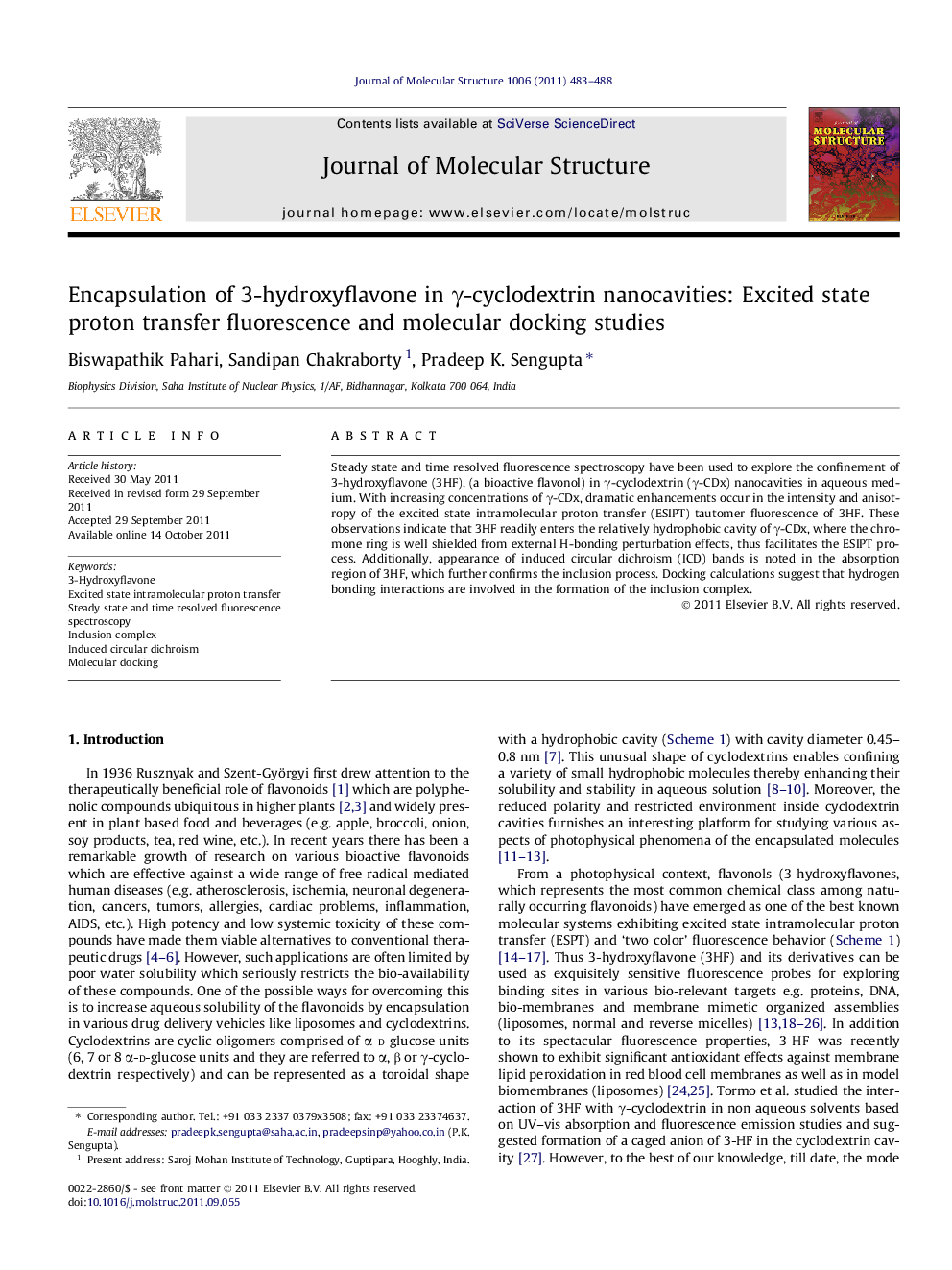| Article ID | Journal | Published Year | Pages | File Type |
|---|---|---|---|---|
| 1410105 | Journal of Molecular Structure | 2011 | 6 Pages |
Steady state and time resolved fluorescence spectroscopy have been used to explore the confinement of 3-hydroxyflavone (3HF), (a bioactive flavonol) in γ-cyclodextrin (γ-CDx) nanocavities in aqueous medium. With increasing concentrations of γ-CDx, dramatic enhancements occur in the intensity and anisotropy of the excited state intramolecular proton transfer (ESIPT) tautomer fluorescence of 3HF. These observations indicate that 3HF readily enters the relatively hydrophobic cavity of γ-CDx, where the chromone ring is well shielded from external H-bonding perturbation effects, thus facilitates the ESIPT process. Additionally, appearance of induced circular dichroism (ICD) bands is noted in the absorption region of 3HF, which further confirms the inclusion process. Docking calculations suggest that hydrogen bonding interactions are involved in the formation of the inclusion complex.
► Enhanced ESIPT tautomer emission shows 3-HF enters the hydrophobic γ-CDx cavity. ► High fluorescence anisotropy value confirm confinement of 3-HF in γ-CDx. ► Appearance of ICD bands proves interaction of 3HF with the chiral γ-CDx host. ► Docking studies reveal that the chromone moiety of 3-HF is encapsulated in γ-CDx. ► H-bonding and van der Waals interactions are main driving forces for complexation.
